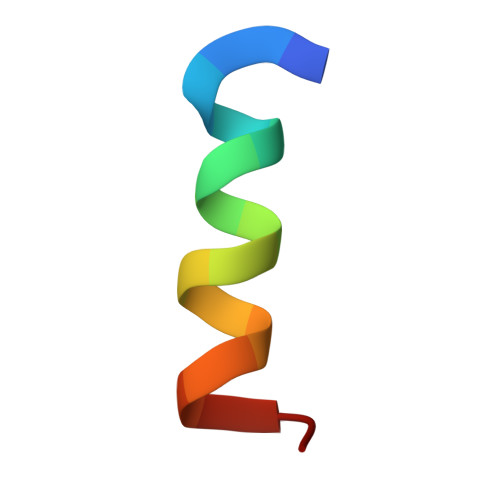Molecular basis of coiled-coil formation.
Steinmetz, M.O., Jelesarov, I., Matousek, W.M., Honnappa, S., Jahnke, W., Missimer, J.H., Frank, S., Alexandrescu, A.T., Kammerer, R.A.(2007) Proc Natl Acad Sci U S A 104: 7062-7067
- PubMed: 17438295
- DOI: https://doi.org/10.1073/pnas.0700321104
- Primary Citation of Related Structures:
2OVN - PubMed Abstract:
Coiled coils have attracted considerable interest as design templates in a wide range of applications. Successful coiled-coil design strategies therefore require a detailed understanding of coiled-coil folding. One common feature shared by coiled coils is the presence of a short autonomous helical folding unit, termed "trigger sequence," that is indispensable for folding. Detailed knowledge of trigger sequences at the molecular level is thus key to a general understanding of coiled-coil formation. Using a multidisciplinary approach, we identify and characterize here the molecular determinants that specify the helical conformation of the monomeric early folding intermediate of the GCN4 coiled coil. We demonstrate that a network of hydrogen-bonding and electrostatic interactions stabilize the trigger-sequence helix. This network is rearranged in the final dimeric coiled-coil structure, and its destabilization significantly slows down GCN4 leucine zipper folding. Our findings provide a general explanation for the molecular mechanism of coiled-coil formation.
Organizational Affiliation:
Biomolecular Research, Structural Biology, Paul Scherrer Institut, CH-5232 Villigen PSI, Switzerland. michel.steinmetz@psi.ch
















